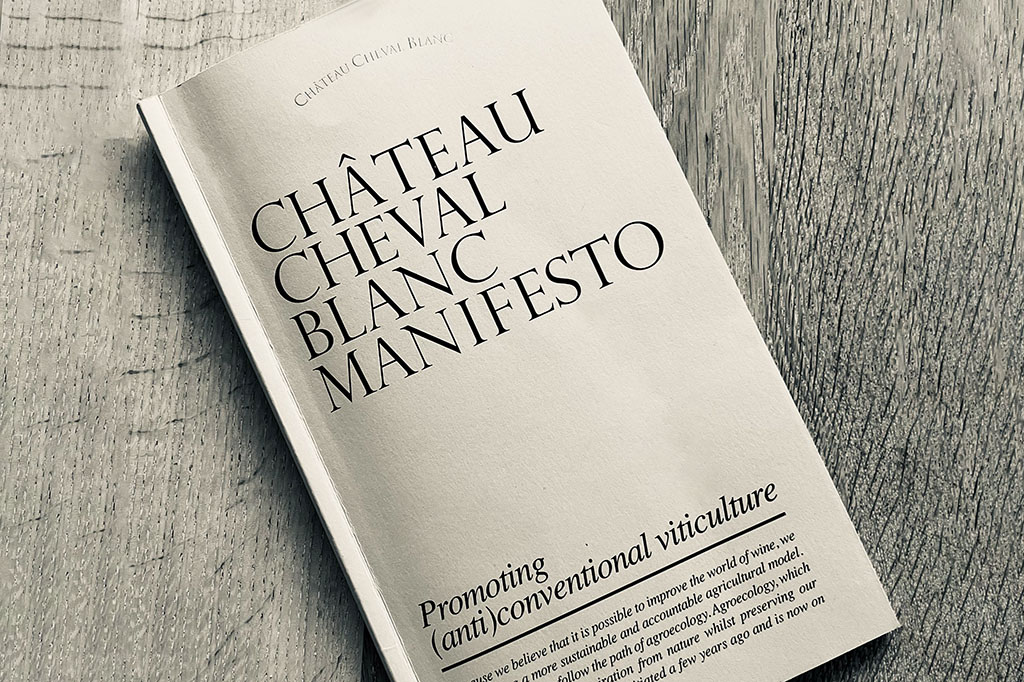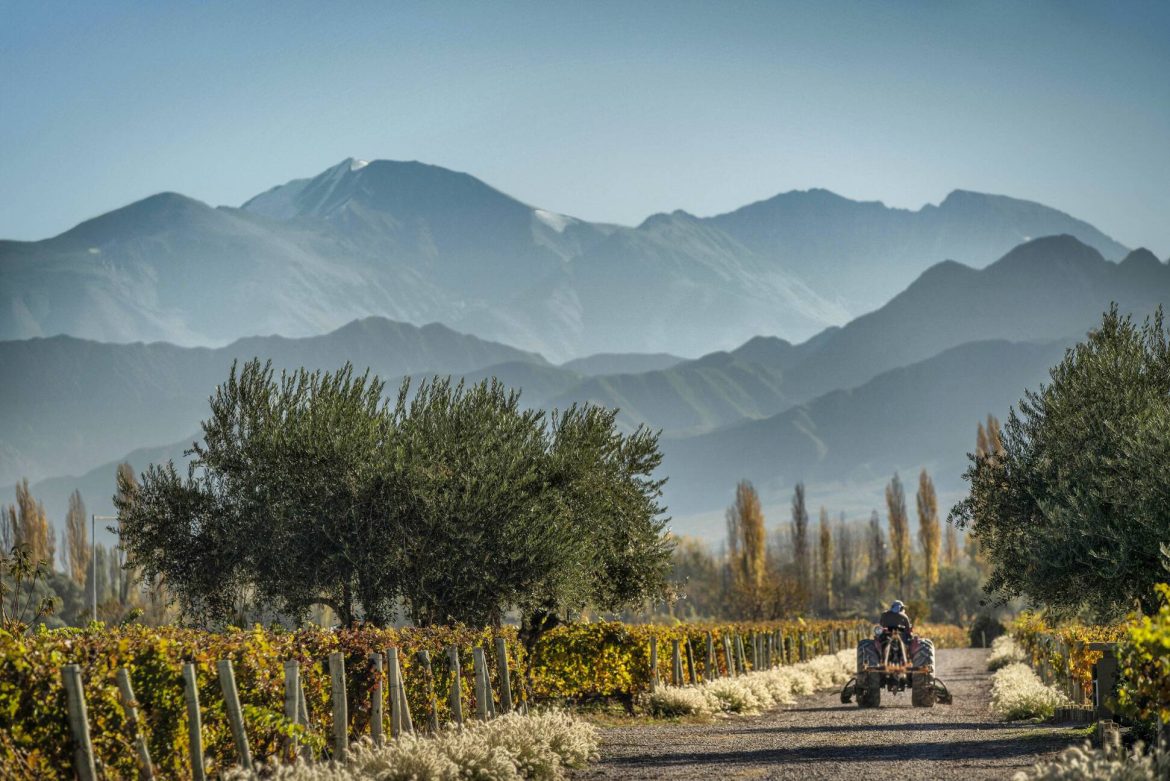In a region where water resources are sparse, it might seem like an unusual choice to plant a host of cover crops, fruit trees and forestry trees in amongst the vines. But that’s just what Cheval des Andes is doing in its vineyards in Mendoza, as part of their radical agroecology manifesto.
Following in the footsteps of Cheval Blanc, their parent estate in Bordeaux who published the manifesto last year, the team at Cheval des Andes are also implementing an innovative agroecology plan to bolster biodiversity, enrich the soils, mitigate climate change and create more complexity while retaining freshness in the wines.
“There are several parts to the plan,” explains Cheval des Andes’ Technical Director Gerald Gabillet. “The first is no more tilling of the soils and planting cover crops, to allow them to create greater networks of micilliim in the soil and richer nutrition. The cover crops will actually give us more efficient retention of water in the soils we think, rather than compete with the vines. And then the planting of trees is also so that they act like a water pump in the soil, but also the trees give us another level of housing for birds and insects, as well as creating some shade for a cooler microclimate.”
The planting of trees isn’t a minor undertaking, with 80 trees per hectares being planted — both surrounding and within vine rows. The other benefit of these fruit trees is that they will produce food for the local community and workers — a benefit that Cheval des Andes has already been reaping with their olive trees and cherry trees for several years now. New trees including plum and pear have already gone in last year, with more forestry trees coming this year.
A manifesto for the future

“We have the benefit of using Cheval Blanc’s experience, but we are also adapting our cover crop and plantations to our climate and soils,” explains Gabillet. “And we are using our data to have a local interpretation and find the best way for us in Mendoza — adapting our vineyards in Las Compuertas as well as Altamira.”
It’s an ambitious plan but a sensitive one too, looking at the individualities of each plot and the people that care for it. “One of the key elements is also the social part…” adds Gabillet. “We don’t only want to do this for our own benefit, but use it as a way to share with the local community — through education too. With a plan to This polyculture is the way that vineyards were planted over a hundred years ago in Mendoza, and we want to come back to this together.”
As some of the oldest vineyards of South America testify, where vineyards are often planted with trees and flowers, polyculture certainly feels like the way back to the future.
Click here to view Cheval des Andes’ wine tasting note
Want to know more about Argentina and the
wine regions of the Uco Valley?
ORDER YOUR COPY of The South America Wine Guide now!
E-book AVAILABLE ONLINE too.

